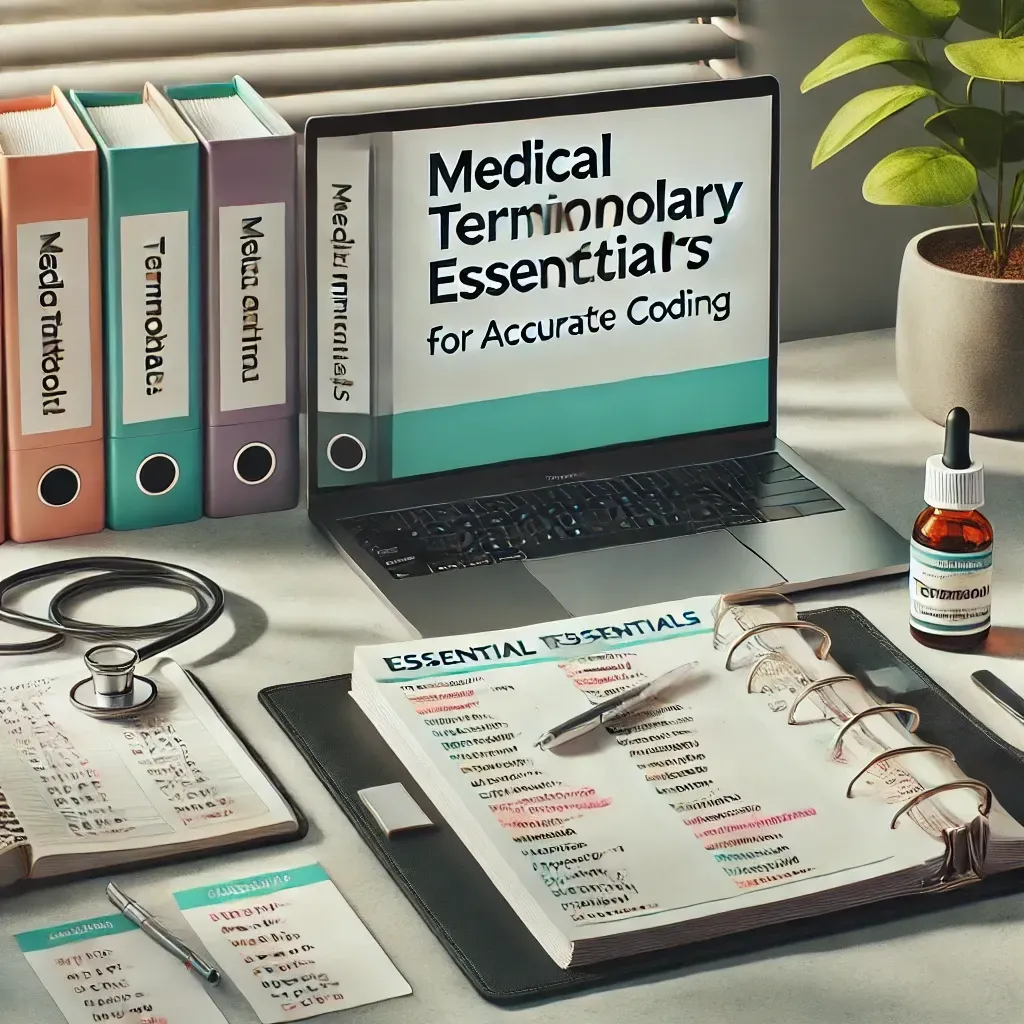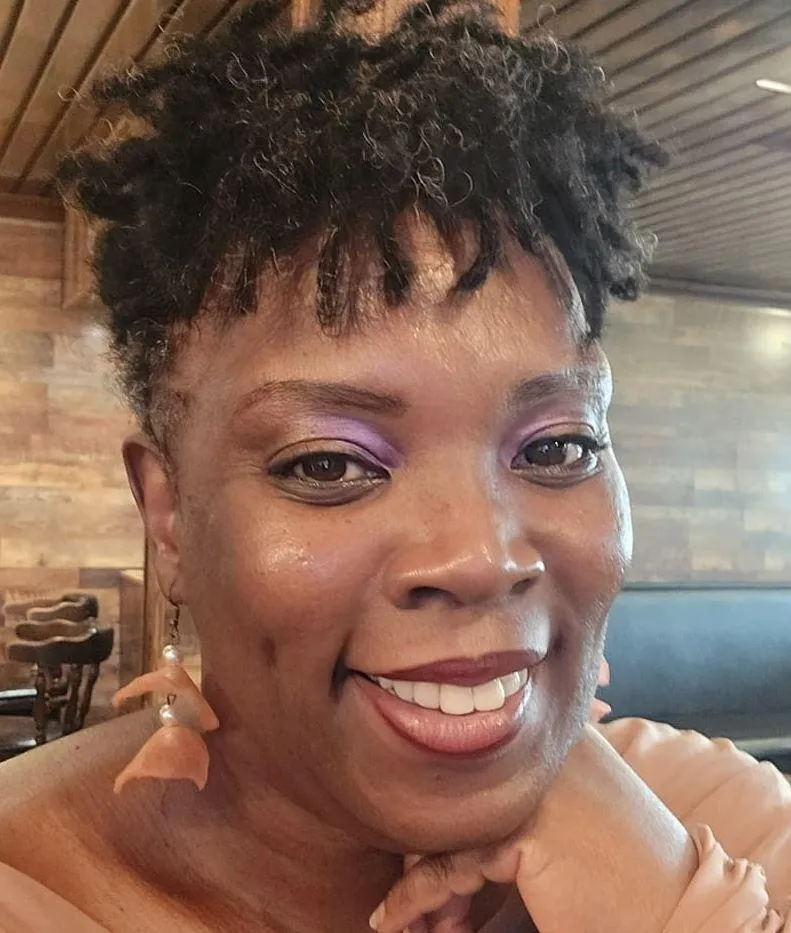

Medical Terminology Essentials for Accurate Coding
Medical Terminology Essentials for Accurate Coding
Introduction
Medical terminology is the language used to describe the human body, medical procedures, diseases, and conditions. For medical coders, understanding medical terminology is crucial for accurate coding, as it enables them to interpret clinical documentation, select the right codes, and avoid costly errors. This article covers the basics of medical terminology essential for medical coders and provides tips for mastering it to improve coding accuracy.
1. Why Medical Terminology is Important for Coders
Ensures Accurate Code Selection
Medical terminology allows coders to understand the exact diagnoses and procedures documented by healthcare providers, which is essential for choosing accurate codes.
Reduces Errors and Denials
Understanding terminology reduces the risk of misinterpreting documentation, which can lead to coding errors, claim denials, and delayed payments.
Improves Communication and Compliance
Medical terminology facilitates communication between coders, healthcare providers, and payers, supporting compliance with regulatory guidelines and accurate documentation.
2. Basic Components of Medical Terminology
Root Words
The root word is the main part of a medical term and usually indicates the body part or system involved. Examples include:
Cardi (heart)
Hepat (liver)
Gastr (stomach)
Prefixes
Prefixes appear at the beginning of a term and modify the meaning, often indicating location, number, or time. Examples include:
Hyper- (excessive)
Hypo- (under)
Pre- (before)
Suffixes
Suffixes are added to the end of a term to provide additional context, such as the type of condition or procedure. Examples include:
-itis (inflammation)
-ectomy (removal)
-ology (study of)
3. Common Medical Terms Coders Should Know
Anatomy and Body Systems
Understanding basic anatomy terms, such as cardio (heart), neuro (nervous system), and derm (skin), helps coders identify the body part or system involved in the diagnosis.
Diseases and Conditions
Familiarity with terms describing common conditions, such as arthritis (joint inflammation) and hypertension (high blood pressure), is essential for accurate code selection.
Procedures and Treatments
Procedural terms, such as biopsy (tissue removal for examination) and laparotomy (surgical opening of the abdomen), help coders understand the services provided to patients.
4. Decoding Medical Terms
Breaking Down Complex Terms
Coders can break down complex terms into their root word, prefix, and suffix. For example:
Gastroenteritis: Gastr (stomach) + enter (intestine) + itis (inflammation) = inflammation of the stomach and intestines.
Using Word Parts to Infer Meaning
By understanding prefixes, roots, and suffixes, coders can often infer the meaning of unfamiliar terms, making it easier to select the correct code.
5. Key Medical Terminology for Different Body Systems
Cardiovascular System
Angio (vessel): Example - Angioplasty (procedure to open blood vessels)
Cardio (heart): Example - Cardiomyopathy (disease of the heart muscle)
Respiratory System
Broncho (bronchus): Example - Bronchitis (inflammation of the bronchial tubes)
Pneumo (lung): Example - Pneumonia (infection of the lung)
Musculoskeletal System
Arthro (joint): Example - Arthroscopy (joint examination)
Myo (muscle): Example - Myopathy (disease of the muscle)
6. Resources for Learning Medical Terminology
Medical Terminology Courses
Formal courses in medical terminology, available online and in-person, provide structured learning to help coders understand the essentials.
Coding Manuals and References
Coding manuals often include terminology sections, providing definitions and examples that help coders understand terms relevant to specific codes.
Medical Dictionaries and Glossaries
Medical dictionaries, such as Taber’s or Dorland’s, are useful references for unfamiliar terms and offer detailed explanations.
7. Tips for Mastering Medical Terminology
Practice with Flashcards
Flashcards help coders memorize terms, prefixes, suffixes, and root words. Using flashcards daily reinforces terminology knowledge over time.
Use Mnemonics
Mnemonics, such as acronyms or short phrases, make complex terms easier to remember. For example, “CARD” can help remember Cardiology, Arrhythmia, Rheumatic, and Disease related to the heart.
Break Terms into Parts Regularly
Regularly breaking down terms into root words, prefixes, and suffixes reinforces understanding and makes it easier to decode new terms.
8. Avoiding Common Mistakes in Medical Terminology
Misinterpreting Similar Terms
Many medical terms sound similar but have different meanings. For instance, “arthritis” (joint inflammation) vs. “arthrosis” (joint condition). Always double-check terms before coding.
Overlooking Prefixes and Suffixes
Ignoring prefixes or suffixes can lead to incorrect interpretations. Make sure to consider the entire word to accurately understand its meaning.
Relying on Assumptions
Avoid assuming the meaning of a term based on partial understanding. Look up unfamiliar terms to ensure correct interpretation and coding.
9. Using Medical Terminology in Coding Documentation
Ensuring Consistency with Documentation
Medical terminology should align with the provider’s documentation. Accurate terminology interpretation ensures that codes reflect the services provided.
Documenting Correctly
Coders may also need to communicate with providers using correct medical terminology, especially when clarifying documentation. Using accurate terms improves understanding and accuracy.
Supporting Compliance with Clear Language
Using correct terminology in coding documentation supports compliance, as it aligns with industry standards and minimizes the risk of errors.
10. Continuing Education for Medical Terminology
Regularly Review Terms
Medical terminology is continually evolving. Regularly reviewing and practicing terms helps coders stay current and maintain their proficiency.
Attend Medical Terminology Workshops
Many coding associations offer terminology workshops, where coders can refine their skills and learn new terms relevant to coding updates and advancements.
Utilize Online Terminology Tools
Many websites and apps offer medical terminology quizzes and flashcards, allowing coders to practice and improve terminology knowledge on the go.
Conclusion
Medical terminology is a fundamental skill for medical coders, supporting accurate coding, clear communication, and compliance. By understanding prefixes, root words, and suffixes, coders can decode complex terms, avoid common errors, and improve coding accuracy. With regular practice, use of resources, and ongoing education, medical coders can master essential medical terminology and make valuable contributions to their healthcare teams.
Infinity HIM Medical Coding School
Our focus is your Employment!
Medical Coding Training
We provide the training you need to study and prepare for your Medical Coding career.
Medical Terms I, II
CPT Coding I, II, III
ICD-10-CM I, II, III

Coaching and Mentoring
Get the support you need to transition from school to a well paying job with Infinity HIM!
Interview Techniques & Training
Resume Review and Writing
Mentorship
Career Training/On-the-Job Training
Job Placement Consideration with Partners
Start Your Career in Medical Coding

Enroll Now $897!
Our 8 week course zeros in on the details to help you learn what you need to get a job in medical coding in a highly competitive field. With our training and support, you can have confidence to take the exam and get a job! Get access to all three modules for a special price of $897.


Ready to start looking into the Medical Coding Career?
If you have been thinking about entering this high-paying career, everyone starts by learning Medical Terminology. But you don't have to! I want you to be successful and have the tools you need to achieve your goals in this field.
You can pace your enrollment by ordering the courses separately, allowing you to focus on the aspect of medical coding you need the most.
Module One: Medical Terms I, II
Module Two: CPT I, II, III
Module Three: ICD-10-CM I, II, III
Ready to start Medical Coding School?
Begin with watching our quick video to review parts of the body and see how your knowledge and interest will help you transition to Medical Coding.
Questions...

Is this medical billing?
Can I really get a job?
How long will it take?
Do you help me find a job?
How long does this take?

Answers...
The short answer. You can finish our course in 8 weeks. Yes we offer support for finding a job and you getting a job is our priority.
Enroll now and save!
Register for and take advantage of early enrollment $897
To attend a quality medical coding school is easily $3,500 or more and the training time is 6 months or longer. But if you need a better job now, and more money, you need a faster program that focuses on the most important details.
You have time to master your knowledge, but you will need core concepts to get quality employment and great referrals.
Save your spot and see the difference with Infinity HIM Medical Coding School.

Meet Melvina Washington the CEO and founder of Infinity HIM School. Medical coding was a industry I started over 20 years ago. My life needed to change. I went to college but didn't land a job paying enough to live. I got medical coding training, and learned the business that I teach to my students. I went from having no enough, to making over 100k a year. I can give you the Rundown on Medical Coding Free!
The Process is Simple...

1. Enroll
Start your Medical Journey with learning the Three Core Concepts every Medical Coder must learn: Medical Terms I and II, CPT I, II, and III, and ICD-10-CM I, II, III.


2. Study and Practice the Material You've Learned!
With our training and teacher we make learning medical coding simple. Knowing how to interact with information is far better than memorizing the entire book.


3. Get a Job!
Once you have completed your training and testing, you are ready to seek employment. This process can all happen in a matter of two to three months.
Start today and begin your journey as a Medical Coder!

Hear From Our Clients
Infinity HIM Medical Coding School helped me find employment within a month of graduating. I am in Melvina's mentorship program and her additional help on the job is priceless.

★★★★★
Zenicha H
Medical Coder
I wasn't sure if I could learn the material as quickly as 8 weeks. But after I started the course, I was hooked. I finished a week later, but I test in about a week. I am excited for what comes next.

★★★★★
Jennifer C
Medical Coder
I enrolled and while I was in training, I asked about other opportunities. Having a conversation with Melvina sold me on the school. She is the owner and she has a heart for medical coding. I've known her for years but I am glad I enrolled in her mentorship program. I finished school with another program, but I couldn't get a job. I met Melvina, and I was working within two weeks! She is amazing.

★★★★★
LaQuann B
Medical Coder

© 2024 Infinity HIM School - All Rights Reserved